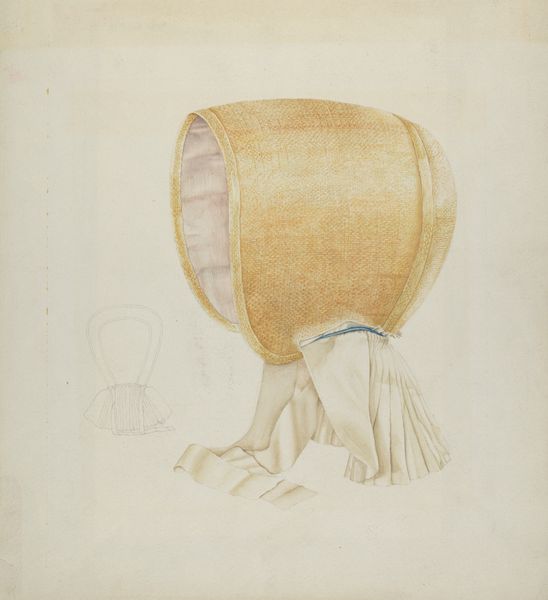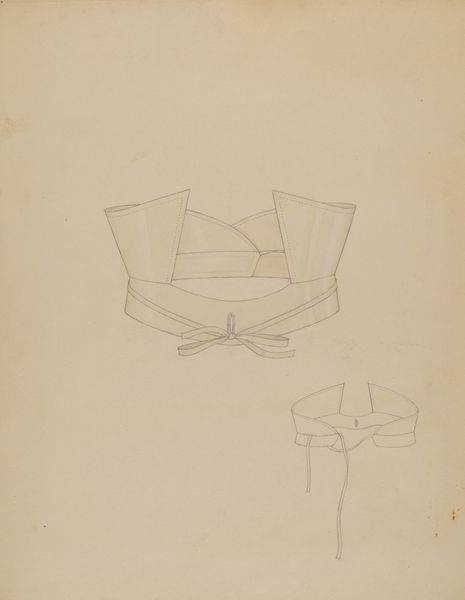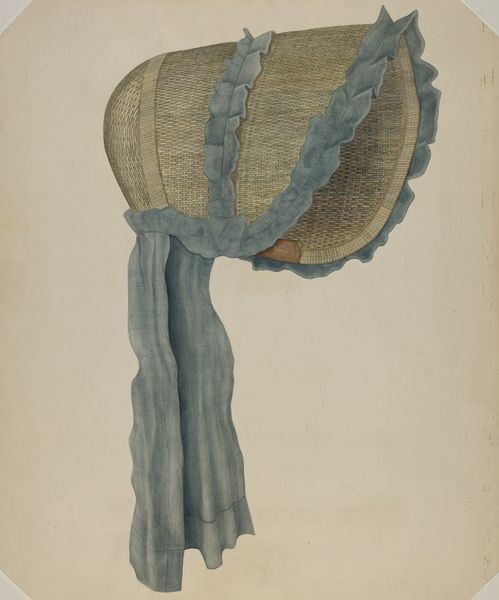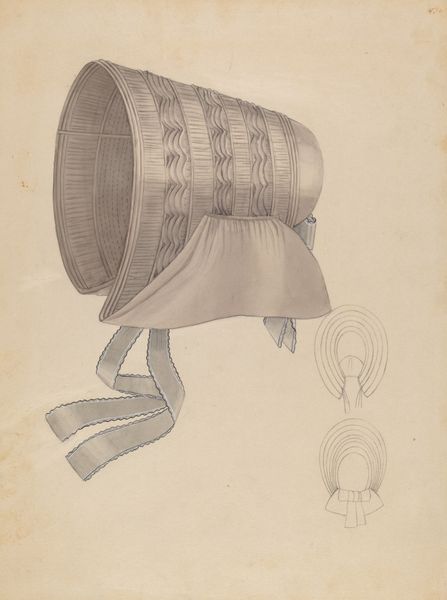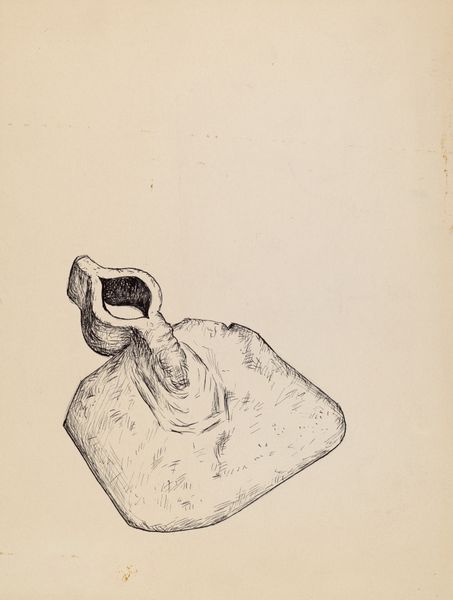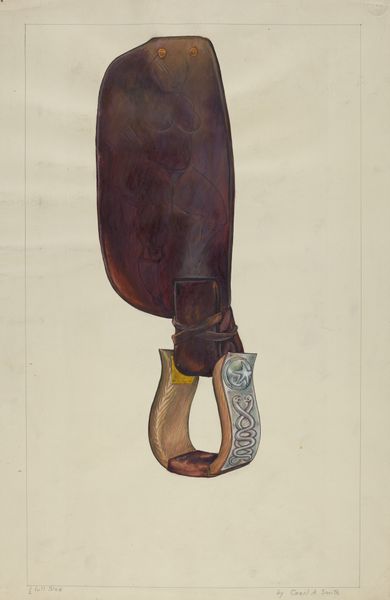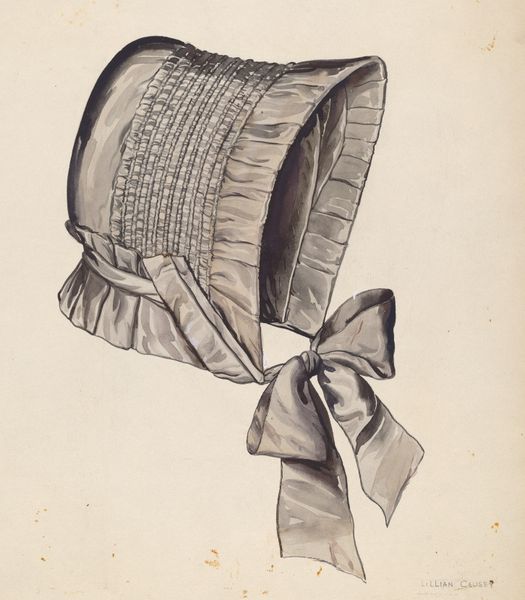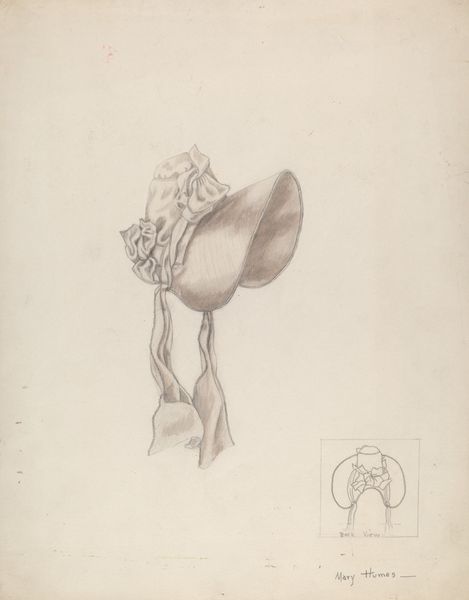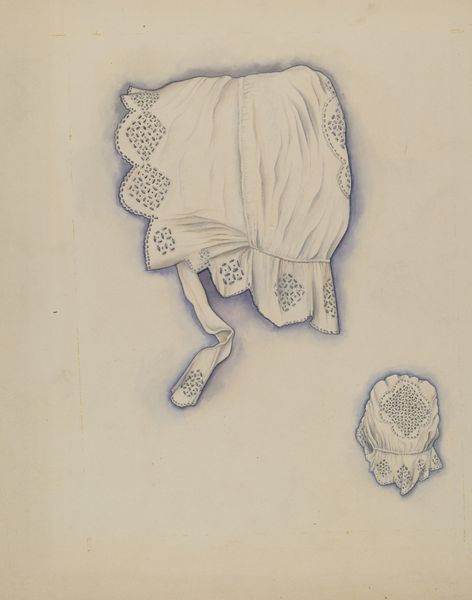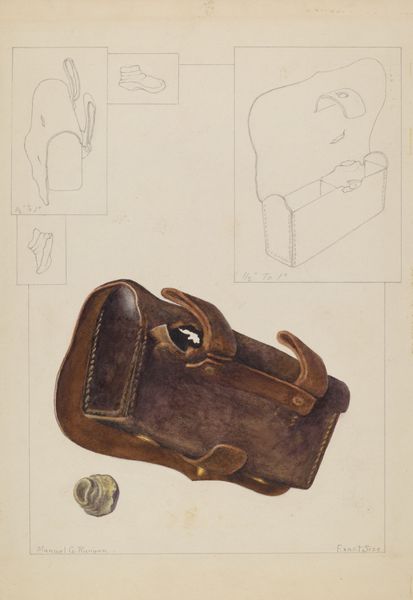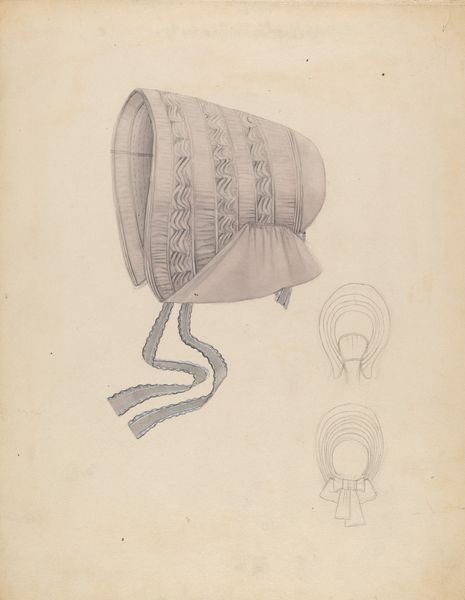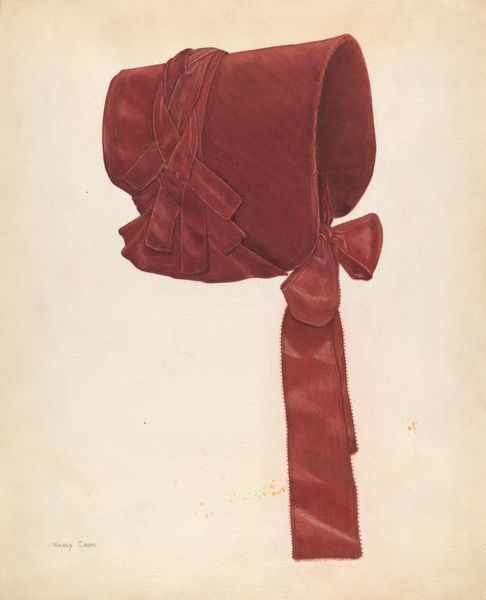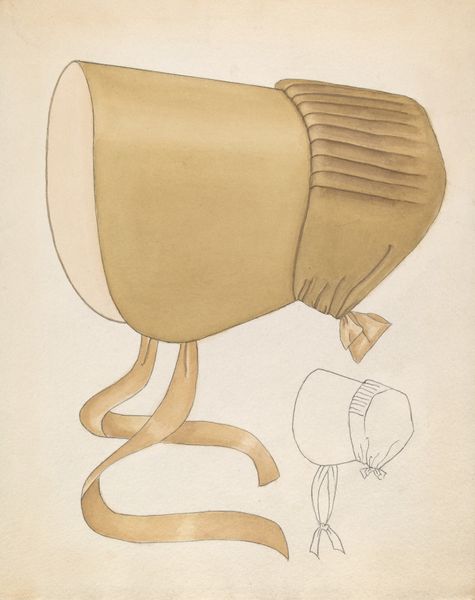
drawing, watercolor
#
drawing
#
watercolor
#
watercolour illustration
#
academic-art
#
modernism
#
watercolor
Dimensions: overall: 34.8 x 39.1 cm (13 11/16 x 15 3/8 in.)
Copyright: National Gallery of Art: CC0 1.0
Curator: Alice Stearns created this watercolor and drawing titled "Shaker Bonnet" around 1936. Immediately, what catches your eye? Editor: The material effect, the almost luminous rendering of the bonnet’s fabric. You can practically feel the light reflecting off its surface. I'm intrigued by its delicacy. Curator: Yes, the softness of the watercolor suits the subject matter. The Shaker bonnet, historically, represents much more than mere clothing. For the Shakers, it symbolized humility, uniformity, and a detachment from worldly vanity. Editor: And looking at Stearns' depiction, it becomes clear it is intended as a commodity; note its soft presentation and its fine production—very much tied to industry, not the spartan lives the Shakers idealized. How might we interpret the tension there? Curator: A point well taken. The Shakers were, after all, quite innovative in marketing and mass production, which conflicts interestingly with their religious doctrine of selflessness. In visual terms, the bonnet is almost iconic. Its simple shape and pale color palette communicate an idea of purity. It became a very distinct signifier, representative of a particular lifestyle and value system. Editor: Considering that Stearns completed this artwork in the 1930s, in what ways was she consciously linking this austere symbol with burgeoning industry of that time? Was this bonnet being newly introduced as something trendy, capitalizing on its reputation of ethical manufacturing while Shakers communities declined? Curator: Fascinating ideas to consider within its composition, it makes for an uncanny link between historical memory and modern presentation of Shaker material production. Perhaps there's a subtle commentary embedded in this delicate study. Editor: Precisely! Thank you; a lot to chew on, especially with objects like this whose seeming transparency veils so much underlying context about craft and consumption.
Comments
No comments
Be the first to comment and join the conversation on the ultimate creative platform.
